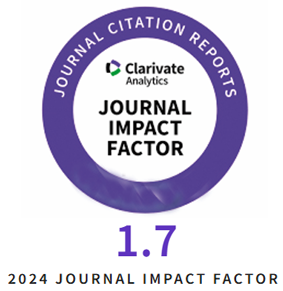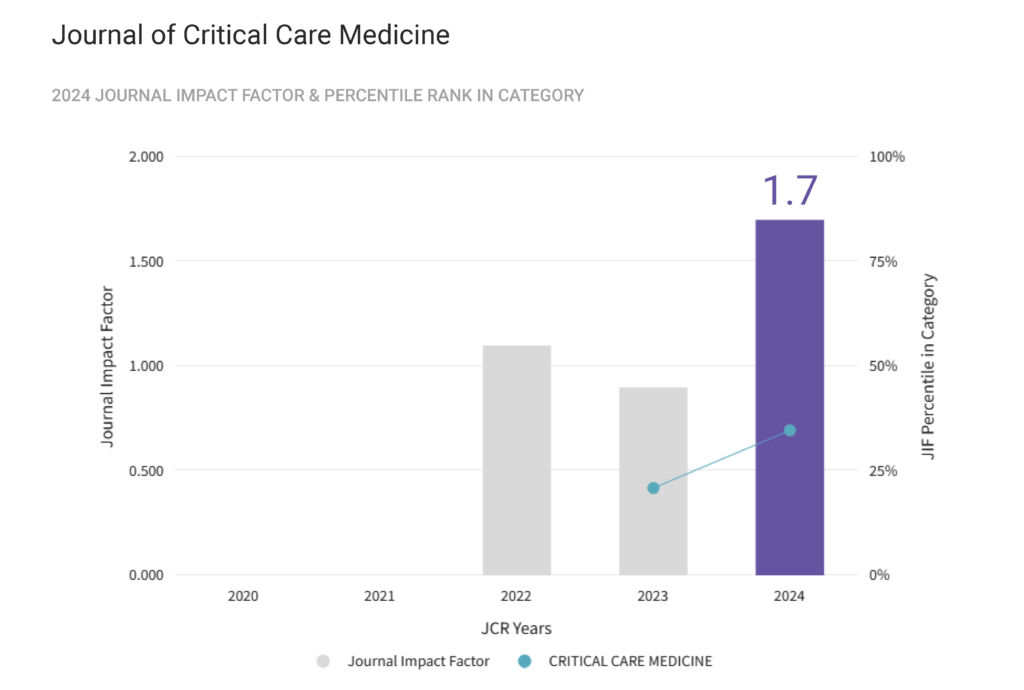Infection with Raoultella ornithinolytica is rare and normally the infection is present in patients with underlying malignancies or chronic diseases. It is normally treated with antibiotics. In this case report, a neuro-intensive patient without malignancies or other severe chronic diseases was colonized with Pseudomonas aeruginosa but infected with Raoultella ornithinolyca. The patient recovered without treatment with antibiotics.
Category Archives: Case Report
The Use of Endotoxin Adsorption in Extracorporeal Blood Purification Techniques. A Case Report
Sepsis and septic shock are major healthcare problems, resulting in high morbidity and mortality. The Surviving Sepsis Campaign (SSC), which standardised the approach to sepsis, was recently updated. Strategies to decrease the systemic inflammatory response have been proposed to modulate organ dysfunctions. Endotoxin, derived from the membrane of Gram-negative bacteria, is considered a major factor in the pathogenesis of sepsis. Endotoxin adsorption, if effective, has the potential to reduce the biological cascade of Gram-negative sepsis. We present a case of a 64-year-old man with severe Gram-negative sepsis, following purulent peritonitis secondary to rectosigmoid adenocarcinoma. To reduce the amplitude of the general effects of endotoxins we used a novel device, the Alteco® LPS Adsorber (Alteco Medical AB, Lund, Sweden), for lipopolysaccharide (LPS) adsorption
The efficacy markers were: the overall haemodynamic profile, translated into decreased vasopressor requirements, the normalisation of the cardiac index, the systemic vascular resistance index combined with the lactate level and the reduction in procalcitonin (PCT) levels. A decrease in the sequential organ failure assessment (SOFA) score at twenty-four hours was demonstrated. The clinical course following treatment was favourable for the days immediately following the treatment.This was attributed to the removal of endotoxin from the systemic circulation. The patient died one week after the endotoxin removal session, developing an ischemic bowel perforation with subsequent multiple organ failures.
Extracorporeal Membrane Oxygenation in Nivolumab Associated Pneumonitis
Background: Newly approved immunotherapeutic agents, like CTLA-4 inhibitors and antibodies against PD-1, are a promising therapeutic option in cancer therapy.
Case presentation: A 74-year-old man, with a history of advanced stage melanoma and treatment with ipilimumab, pembrolizumab and nivolumab, was admitted to the hospital due to respiratory failure with hypoxemia and dyspnoea. He rapidly developed severe acute respiratory distress syndrome (ARDS), which required treatment in the intensive care unit which included mechanical ventilation and extracorporeal membrane oxygenation (ECMO). Computed tomographic imaging (CT) showed signs of a pneumonitis, with an ARDS pattern related to the use of PD-1 antibodies. Treating the patient with high-dose immunosuppressive steroids led to an overall improvement. He was transferred to a rehabilitation hospital and subsequently to his home.
Discussion and conclusion: This is a unique case report of a patient suffering a grade 4 adverse event under nivolumab who survived having been treated with ECMO. It highlights the possibility of associated adverse reactions as well as the use of ECMO in palliative care patients. ECMO can be of great success even in patients with malignancies, but careful decision making should be done on a case by case basis.
Non-Obvious, Post-Traumatic, Life-Threatening Bleeding in Two Elderly Patients
The main complication of anticoagulant therapy is major bleeding. Clinicians are usually aware of these side effects and are careful when managing the therapeutic range of vitamin K antagonist drugs. But major bleeding, while life-threatening, can be overlooked if there are no visible signs of bleeding. Two cases are described in which inaccurate diagnoses lead to inadequate treatment.
Neurosyphilis Masquerading as Stroke in an 84-year-old
The case of an 84 years old woman with uncharacteristic neurologic and cognitive symptoms, suspected of ischemic stroke is presented. Following an extensive assessment in the departments of neurology and internal medicine, the unusual aetiology of stroke was identified as meningovascular neurosyphilis. The patient fully recovered after antibiotic therapy. To our knowledge, this the eldest patient with tertiary neurosyphilis reported in the literature.
Toxic Megacolon – A Three Case Presentation
Introduction: Toxic megacolon is a life-threatening disease and is one of the most serious complications of Clostridium difficile infection (CDI), usually needing prompt surgical intervention. Early diagnosis and adequate medical treatment are mandatory.
Cases presentation: In the last two years, three Caucasian female patients have been diagnosed with toxic megacolon and treated in the Clinical Infectious Diseases Hospital, Constanta. All patients had been hospitalized for non-related conditions. The first patient was in chemotherapy for non-Hodgkin’s lymphoma, the second patient had undergone surgery for colon cancer, and the third patient had surgery for disc herniation. In all cases the toxin test (A+B) was positive and ribotype 027 was present. Abdominal CT examination, both native and after intravenous contrast, showed significant colon dilation, with marked thickening of the wall. Resolution of the condition did not occur using the standard treatment of metronidazole and oral vancomycin, therefore the therapy was altered in two cases using intracolonic administration of vancomycin and intravenous tigecycline.
Conclusions: In these three cases of CDI, the risk factors for severe evolution were: concurrent malignancy, renal failure, obesity, and immune deficiencies. Ribotype 027, a marker for a virulent strain of CD, was found in all three cases complicated by toxic megacolon. The intracolonic administration of vancomycin, and intravenous tigecycline was successful when prior standard therapy had failed, and surgery was avoided.
Emergency Surgery in a Critically Ill Patient with Major Drug-Induced Bleeding and Severe Ischaemic Heart Failure
Introduction: Anticoagulant overdose frequently occurs in elderly populations especially in remote areas where medical services are scarce. When emergency surgery is required, such patients offer major anaesthetic challenges.
Case presentation: We describe the case of an elderly patient admitted to a surgical ward with acute abdominal pain, on dual anti-platelet therapy and acenocoumarol for a recent acute myocardial infarction treated percutaneously with two drug-eluting stents. Laboratory tests showed severe anticoagulant overdose with uncoagulable INR. The decision was made to use of both light transmission aggregometry [LTA] for platelet function testing and thromboelastography to aid in the management of perioperative haemostasis in order to prevent both severe bleeding and stent thrombosis. Surgery revealed haemoperitoneum, volvulus of the ileum and a venous mesenteric infarction. Intraoperative blood loss was minimal and no blood products were administered. Postoperative course was uneventful without either thrombotic or haemorrhagic complications and the patient was discharged from the Postanaesthesia Care Unit on postoperative day two.
Conclusion: The use of aggregometry and thrombography helped in both evaluation and management of haemostasis of a high-risk patient by goal-directed administration of pro-and anti- coagulants.
Toxic Epidermal Necrolysis – A Case Report
Toxic epidermal necrolysis (TEN) is an acute, life-threatening muco-cutaneous disease, often induced by drugs. It is characterized by muco-cutaneous erythematous and purpuric lesions, flaccid blisters which erupt, causing large areas of denudation. The condition can involve the genitourinary, pulmonary and, gastrointestinal systems. Because of the associated high mortality rate early diagnosis and treatment are mandatory.
This article presents the case of a sixty-six years old male patient, known to have cirrhosis, chronic kidney failure, and diabetes mellitus. His current treatment included haemodialysis. He was hospitalized as an emergency to the Dermatology Department for erythemato-violaceous, purpuric patches and papules, with acral disposition, associated with rapidly spreading erosions of the oral, nasal and genital mucosa and the emergence of flaccid blisters which erupted quickly leaving large areas of denudation. Based on the clinical examination and laboratory investigations the patient was diagnosed with TEN, secondary to carbamazepine intake for encephalopathic phenomena. The continuous alteration in both kidney and liver function and electrolyte imbalance, required him to be transferred to the intensive care unit. Following pulse therapy with systemic corticosteroids, hydro-electrolytic re-equilibration, topical corticosteroid and antibiotics, there was a favourable resolution of TEN.
The case is of interest due to possible life-threatening cutaneous complications, including sepsis and significant fluid loss, in a patient with associated severe systemic pathology, highlighting the importance of early recognition of TEN, and the role of a multidisciplinary team in providing suitable treatment.
A Fatal Case of Community Acquired Cupriavidus Pauculus Pneumonia
Introduction: Cupriavidus pauculus is a rarely isolated non-fermentative, aerobic bacillus, which occasionally causes severe human infections, especially in immunocompromised patients. Strains have been isolated from various clinical and environmental sources.
Case presentation: A 67-year-old man was admitted to the Intensive Care Unit with acute respiratory failure. The patient was diagnosed with bilateral pneumonia, pulmonary sepsis and underwent invasive mechanical ventilation. Examination revealed diminished bilateral vesicular breath sounds, fever, intense yellow tracheal secretions, a respiratory rate of 24/minute, a heart rate of 123/minute, and blood pressure of 75/55 mmHg. Vasoactive treatment was initiated. Investigations revealed elevated lactate and C-reactive protein levels. A chest X-ray showed bilateral infiltration. Parenteral ciprofloxacin and ceftriaxone were administered. Tracheal aspirate culture and blood culture showed bacterial growth of Cupriavidus pauculus. Colistin was added to the treatment. There was a poor clinical response despite repeated blood culture showing negative results. The diagnosis of multiple organ dysfunction syndrome (MODS) caused by C. pauculus was made. The patient died eleven days after admission.
Conclusions: Clinical improvement cannot always be expected in spite of targeted antibiotic therapy. This pathogen should be considered responsible for infections that usually develop in immunocompromised patients.
Pneumoretroperitoneum after Attempted Epidural Anesthesia
Air may extend to the retroperitoneal space from retroperitoneal perforation of a hollow viscus, infection of the anterior pararenal space with gas-forming organisms and from pneumothorax or pneumomediastinum [1]. Rare pathologies, such as open reduction and internal fixation of femoral fractures and anaerobic abscess of the hip joint have also been described in relation to this complication [1,2]. A rare case of pneumoretroperitoneum caused by insufflation of air during an attempt to achieve epidural anesthesia is described.










